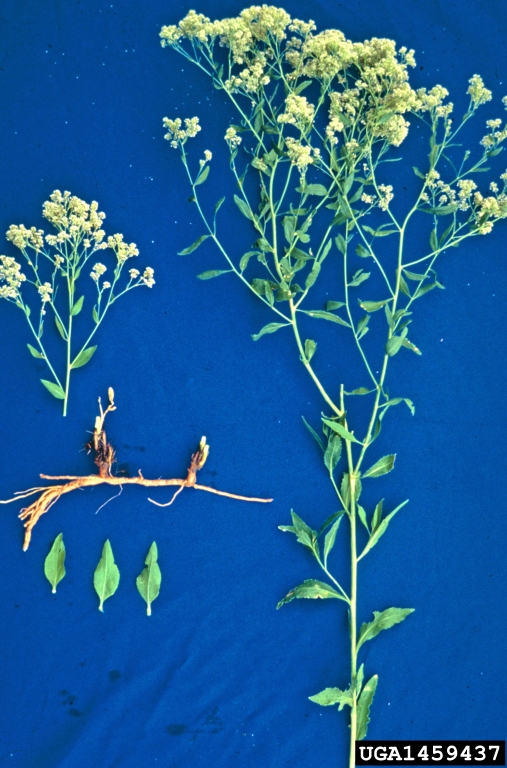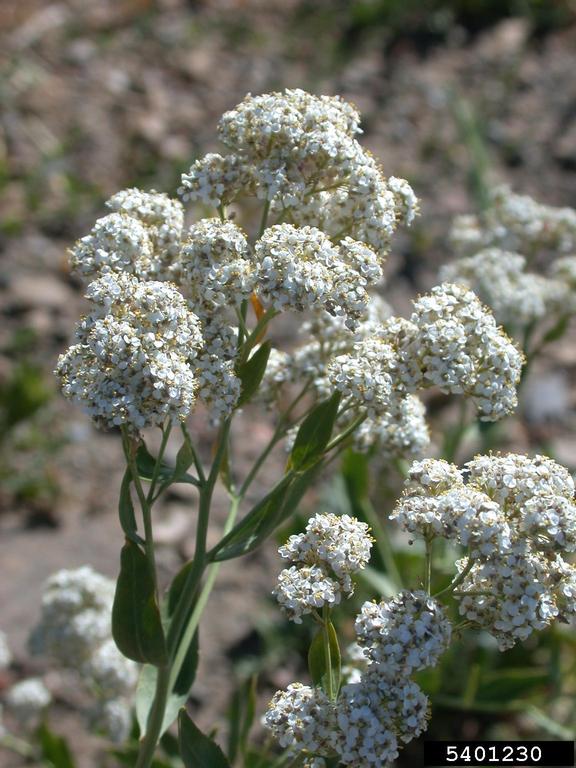Perennial Pepperweed

Perennial Pepperweed
(Lepidium latifolium)
Priority: - Prevent / EDRR
Tags: Agricultural | Terrestrial | EDRR
Identification and Reproduction
Identification:
- Perennial pepperweed is in the mustard family and grows 0.3 to 1.5 m tall. In the right conditions it can grow up to 2 m tall.
- This plant grows from a woody stem. Multiple stems can arise from a single crown.
- Leaves are waxy or leathery. Lower leaves are 30cm long and oblong shaped and upper leaves are 10 cm long. Leaves are alternately arranged on the stem.
- Produces clusters of small, white flowers. Each individual flower is made up of 4 petals.
Reproduction:
- This plant has a deep creeping root system that allows further spread from broken fragments.
- Roots make up about 40% of the total biomass of the plant.
- Pepperweed is a prolific seed producer; a single plant can spread over 16 billion seeds per hectare per year.
- Seeds can be dispersed by wind or water.
- Seeds remain viable for at least 2 years.
Habitat & Ecology
- It commonly invades irrigated pastures, grasslands, rangelands and native meadows.
- It is the most aggressive in wetland habitats, typically growing within 30 m of a water source.
- Can occur in moist soils along riparian areas.
Impacts
Social:
- Contaminates seed crops.
- Reduces crop yields and quality.
- Reduces the forage potential and quality for livestock.
Ecological:
- Large infestations will out-compete native vegetation.
- Dense patches can increase erosion and damage riverbank habitats.
- It acts as a ‘salt pump’, absorbing salt ions from deep within the soil and then depositing salt near the surface.
- Creates monoculture stands across landscapes.
Management
Prevention is a high priority for this plant.
- Use certified, clean seed mixtures to prevent the accidental introduction of pepperweed.
- Ensure clothing, pets, tools and vehicles are free of seeds and plant parts before leaving an infested site.
- Monitor crop lands for perennial pepperweed and please report this plant if you think you have seen it.
Resources
Download BC's Invasive Species Alert on perennial pepperweed here.
For more details check out the Invasive Species Compendium datasheet on Lepidium latifolium (perennial pepperweed).
Header photo (Matt Lavin).




